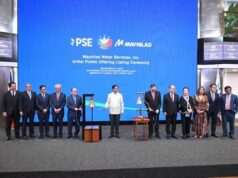Moody’s sees ‘stable’ conditions for PHL banks
By Melissa Luz T. Lopez
Senior Reporter
THE PHILIPPINE banking system will remain “stable” in 2018, Moody’s Investors Service said, noting that conditions will steady across all indicators on strong macroeconomic footing and improving asset quality.
In a Dec. 12 report, the global debt watcher gave a “stable” outlook for the Philippine banking sector next year, in line with expectations across Asia Pacific.
The industry will benefit from “synchronized global recovery and moderate credit growth,” according to Eugene Tarzimanov, vice-president and senior credit officer for Moody’s Financial Institutions Group.
Banks in the Philippines and 12 other economies got a stable outlook, while Vietnam and Indonesia were the only two on the list that rated “positive.”
Only Sri Lanka received a “negative” overall outlook amid deteriorating profitability, government support and a weaker operating environment.
“Macroeconomic conditions have stabilized in most APAC economies and improved in some parts of the region, easing asset quality risks,” the report read, adding that improving global growth will also benefit financial players in the region.
The Philippine economy expanded by 6.7% in the nine months to September, faster than Moody’s 6.5% forecast for the entire year and keeping within the government’s 6.5-7.5% growth goal.
The Philippine banking system scored a stable outlook across all six indicators, with the credit rater citing a viable operating environment, funding liquidity and government support. Lenders are broadly seen to maintain asset quality, ample capital and profitability next year.
Bad loans held by Philippine banks dropped to 1.96% of total debts as of end-October, despite a 16.1% surge in lending that reached P8.342 trillion, central bank data showed.
Moody’s expects Philippine lenders to keep the share of soured debts below two percent in 2018 — among the lowest levels in the region — while maintaining enough reserves to cover non-performing loans.
But a focus on corporate and consumer lending, as well as rising property prices are potential threats to the financials of the region’s banking systems, Moody’s added.
Still, strong government support for domestic banks provides some comfort for these lenders in case of a funding crunch, the report said.
Increasing digitization is expected to present both opportunities and risks, improving cost efficiencies and revenues while at the same time challenging the industry’s “traditional foothold” in payments, deposits and lending, the debt watcher noted.
The Philippines holds a “Baa2” rating — placing the country a notch above minimum investment grade — with a “stable” outlook from Moody’s which was affirmed in June.



